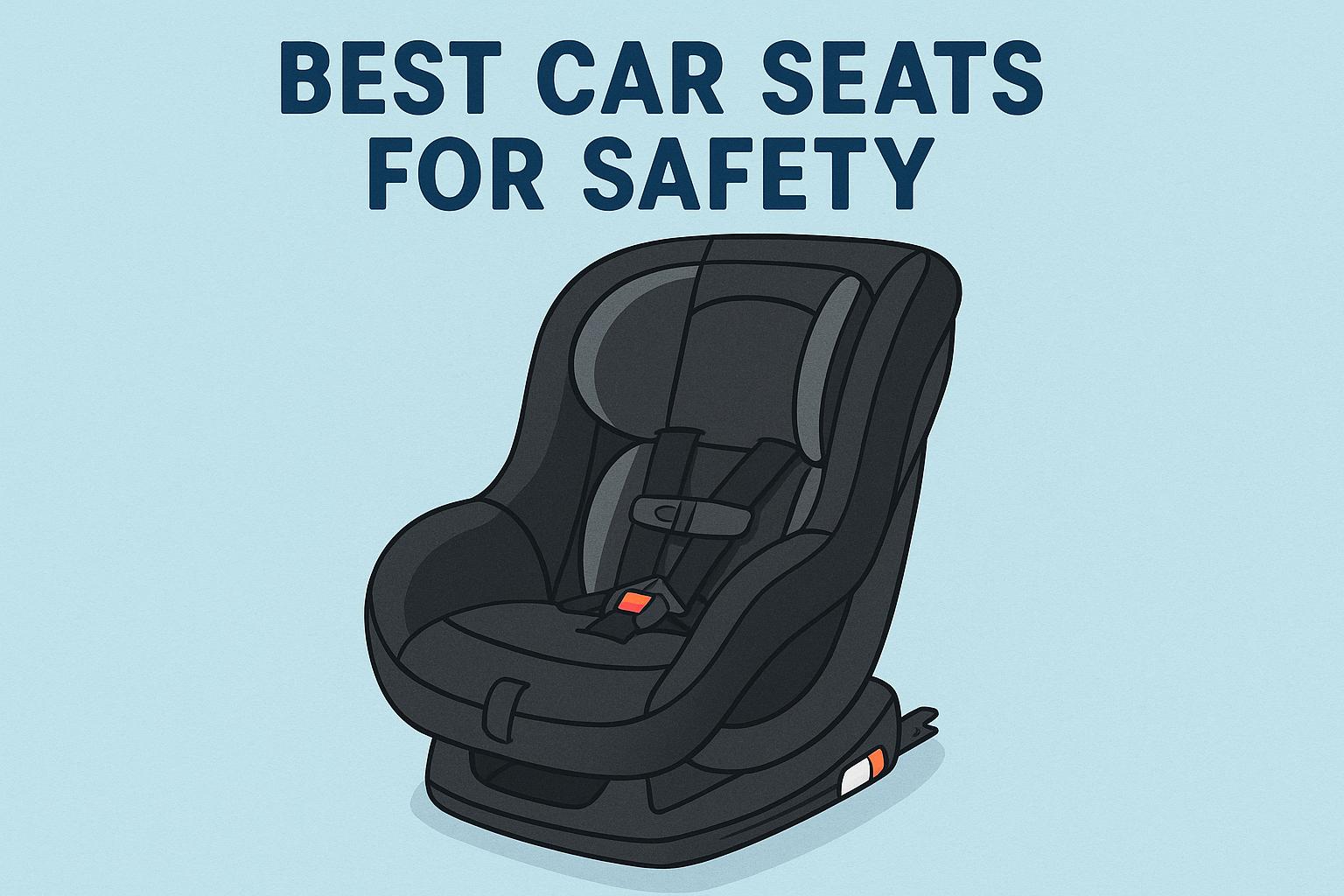The Importance of Car Seat Safety
Ensuring the safety of young passengers in vehicles is paramount. Car seats are specially designed to offer protection during sudden stops or collisions. Their primary purpose is to prevent injuries, and they must meet stringent safety standards. This article delves into the critical aspects of car seat safety, highlighting the best options available today.
Key Features of Safe Car Seats
When selecting a car seat, certain features are vital for optimal safety. These features are integral not only for meeting safety standards but also for providing comfort and convenience.
Five-Point Harness: A five-point harness is essential for distributing crash forces across the strongest parts of a child’s body. The harness fits snugly over the child’s shoulders, hips, and between the legs, ensuring minimal movement and maximum protection. This design is especially crucial during high-impact situations, making it one of the most sought-after features for car seats aimed at younger children.
Side-Impact Protection: Side-impact collisions are especially dangerous due to the proximity of passengers to the vehicle doors. To mitigate this risk, many car seats are equipped with side-impact protection features such as energy-absorbing foam or air cushions. These additional components absorb crash forces, reducing the likelihood of injury.
LATCH System Compatibility: The LATCH (Lower Anchors and Tethers for Children) system is a standardized method for installing car seats without using seat belts. It simplifies the process and secures the seat more effectively, reducing the margin for error. Since 2002, most vehicles have accommodated this system, solidifying its position as a standard expectation for modern car seats.
Adjustable Features: Children grow quickly, and their car seats must adapt to continually provide safety. Car seats that offer adjustable harnesses and headrests accommodate these changes, ensuring a snug and secure fit. Such features extend the usability of the car seat, providing a tailored fit as the child matures.
Types of Car Seats
Understanding the different car seat types is crucial for making an informed choice. Each type caters to specific stages of a child’s development, providing optimal safety at every age.
Infant Car Seats
Infant car seats are designed exclusively for newborns and small infants. These rear-facing seats are ideal for the youngest passengers, providing crucial support to their developing neck, head, and spine. Most infant seats accommodate weights up to 22-35 pounds and include a carry handle for ease of transport. The rear-facing design is proven to be the safest way for infants to travel, primarily because it allows the force of a collision to be spread across the entire body, rather than concentrated on any single point.
Convertible Car Seats
Convertible car seats are versatile options that can evolve with a child’s growth. They start as rear-facing seats and can be converted to forward-facing positions as the child grows. Typically, they support weights from birth up to about 65 pounds, sometimes more. This adaptability makes them a popular choice for parents who want a long-term solution and a product that can accommodate their child through various stages.
Booster Seats
When children outgrow forward-facing car seats, booster seats are the next step. They are crucial for ensuring that the vehicle’s seat belt fits a child correctly, positioning it over the strongest parts of their body. Booster seats are necessary for children who are under 4’9″ or until they are mature enough to use the standard seat belt safely. This transition period is an important safety consideration to prevent injury in potential collisions.
Top Car Seat Models for Safety
Several car seats have garnered excellent safety ratings and reviews due to their innovative features and reliable performance under safety tests.
Chicco KeyFit 30: The Chicco KeyFit 30 is often praised for its straightforward installation process and compatibility with many stroller systems, making it a convenient choice for parents on the go. The seat offers robust side-impact protection and is well-suited for infants.
Britax Boulevard ClickTight: Known for its ClickTight installation system, the Britax Boulevard ClickTight provides secure fastening mechanisms that are ideal for preventing user error. It includes an advanced impact absorption system and superior side-impact protection, positioning it as a top choice for safety-conscious parents.
Graco 4Ever DLX: Featuring a multi-stage design, the Graco 4Ever DLX serves as an all-in-one car seat that transitions from infant to booster stages. Its extensive longevity and inclusion of comprehensive safety features make it a versatile and safe option for growing children.
Maintaining Car Seat Safety
To ensure the continued effectiveness of a car seat, regular maintenance and safety checks are non-negotiable. Proper upkeep extends the lifespan of the car seat and ensures it functions as intended in the event of a collision.
Installation: Verification of proper installation is essential. Regularly check that the car seat is correctly installed and securely fastened. Even minor shifts or looseness can severely compromise safety during a crash, so parents should remain vigilant, particularly after adjusting or moving the seat.
Expiration Dates: Car seats come with expiration dates, beyond which their safety cannot be guaranteed due to potential material degradation over time. It is crucial to regularly check and replace seats that have expired to uphold safety standards.
Recall Notices: Manufacturers may issue recalls on certain models due to undiscovered defects or safety concerns. Registering the car seat with the manufacturer ensures parents receive prompt notifications, making it easier to address such issues to maintain optimal safety.
Conclusion
Car seat safety is an indispensable component of responsible child transportation. By fully understanding the different types of car seats, their key safety features, and how to maintain them properly, parents and caregivers can provide the best possible protection for young passengers. While stringent adherence to safety guidelines requires effort and vigilance, the peace of mind it offers far outweighs the challenges.




